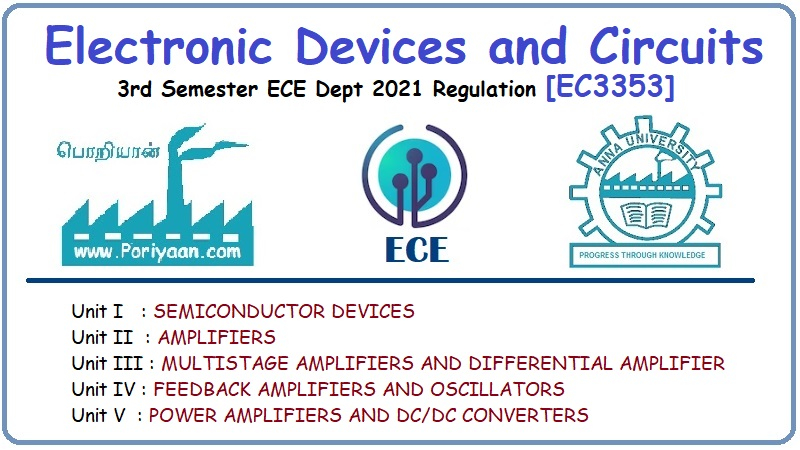Electronic Devices and Circuits: Unit II: Amplifiers
Biasing the MOSFET
The self bias technique given for JFET cannot be used for establishing an operating point for the enhancement MOSFET because of the voltage drop across RS is in a direction to reverse bias the gate and it actually needs forward gate bias.
BIASING THE MOSFET
Biasing of Enhancement MOSFET
Fig.
2.11 shows the drain-to-gate bias circuit for enhancement mode MOSFET.
Here
the gate bias voltage is  This circuit offers the dc stabilization
through the feedback resistor Rf. However, the input resistance is
reduced because of Miller effect.
This circuit offers the dc stabilization
through the feedback resistor Rf. However, the input resistance is
reduced because of Miller effect.
Also
the voltage divider biasing technique given for JFET can be used for the
enhancement MOSFET. Here, the dc stability is accomplished by the de feedback
through RS.
But
the self bias technique given for JFET cannot be used for establishing an
operating point for the enhancement MOSFET because of the voltage drop across RS
is in a direction to reverse bias the gate and it actually needs forward gate
bias.

Fig.
2.12 shows an N- channel enhancement mode MOSFET common source circuit with
source resistor. The gate voltage is

and
the gate to source voltage is
VGS = VDD - VG
Assuming
that VGS > VTN and the MOSFET is biased in the
saturation region, the drain current is

Here
the threshold voltage VTN and conduction parameter KN are
functions of temperature.
The
drain to source voltage is
VDS
= VDD – ID RD
If
VDS > VDS (sat) = VGS – VTN,
then the MOSFET is biased in the saturation region. If VDS < VDS
(sat) = VGS – VTN, then the MOSFET is biased in the
non saturation region, and the drain current is given by

Biasing Depletion MOSFET
Both
the self-bias technique and voltage divider bias circuit given for JFET can be
used to establish an operating point for the depletion mode MOSFET.
Electronic Devices and Circuits: Unit II: Amplifiers : Tag: : - Biasing the MOSFET
Related Topics
Related Subjects
Electronic Devices and Circuits
EC3353 - EDC - 3rd Semester - ECE Dept - 2021 Regulation | 3rd Semester ECE Dept 2021 Regulation
